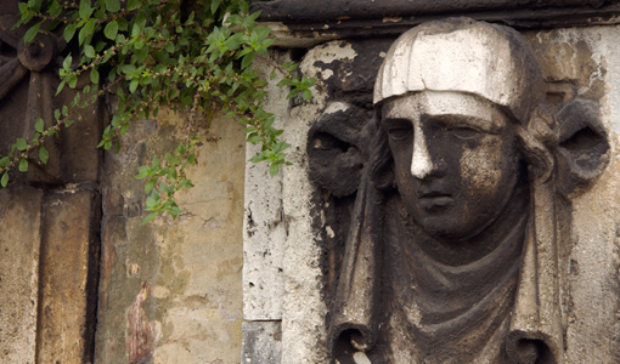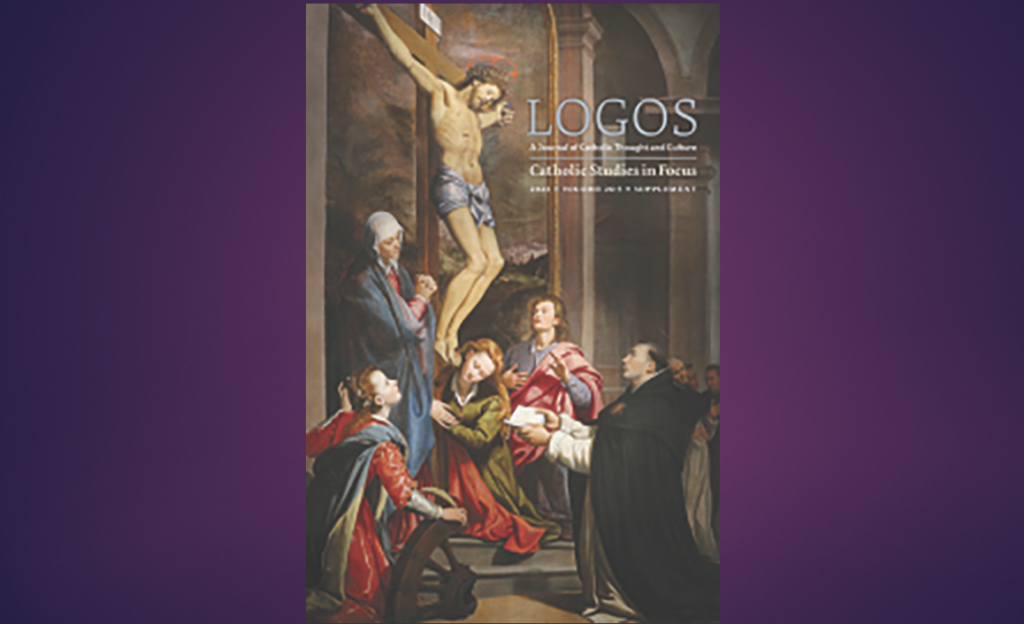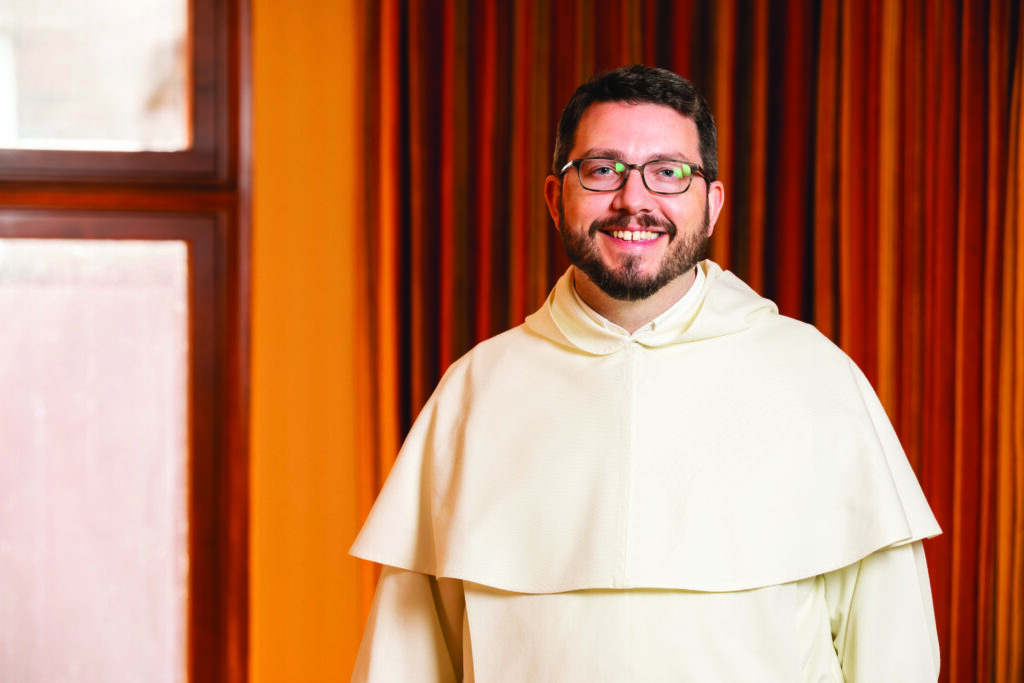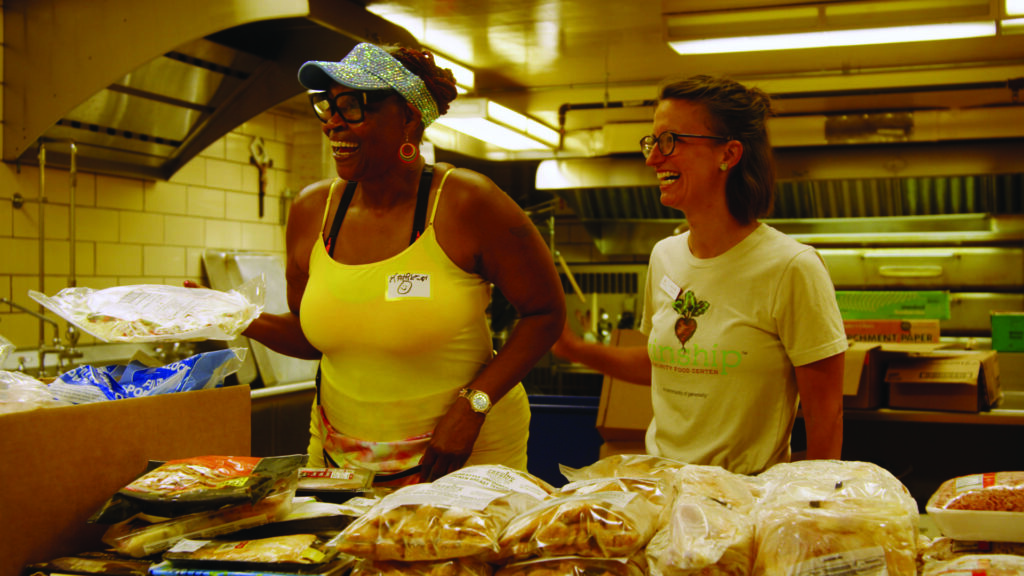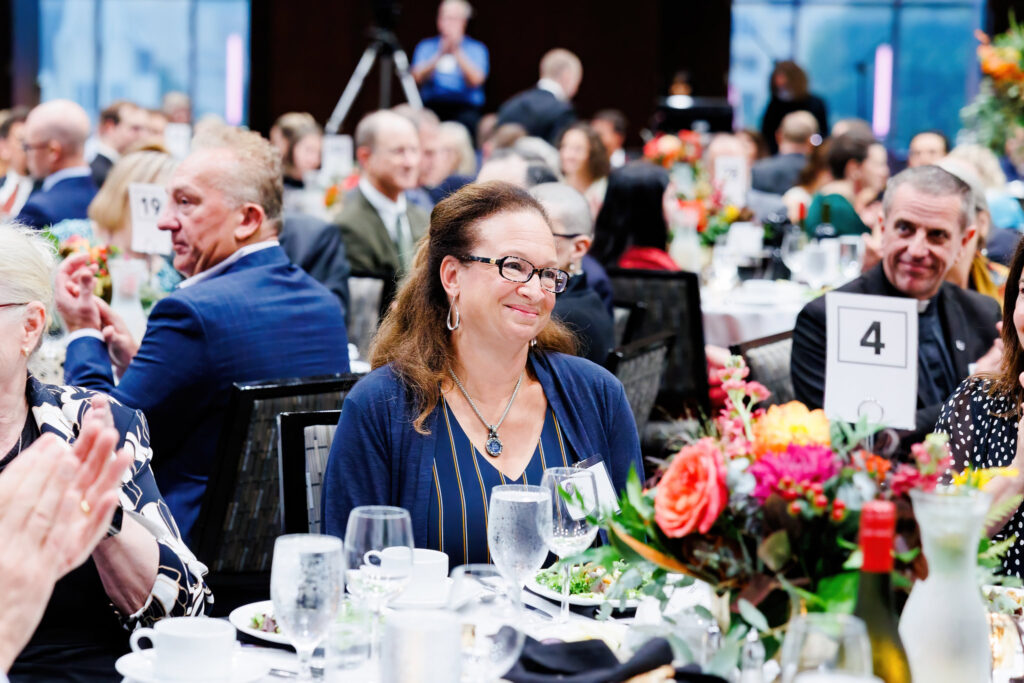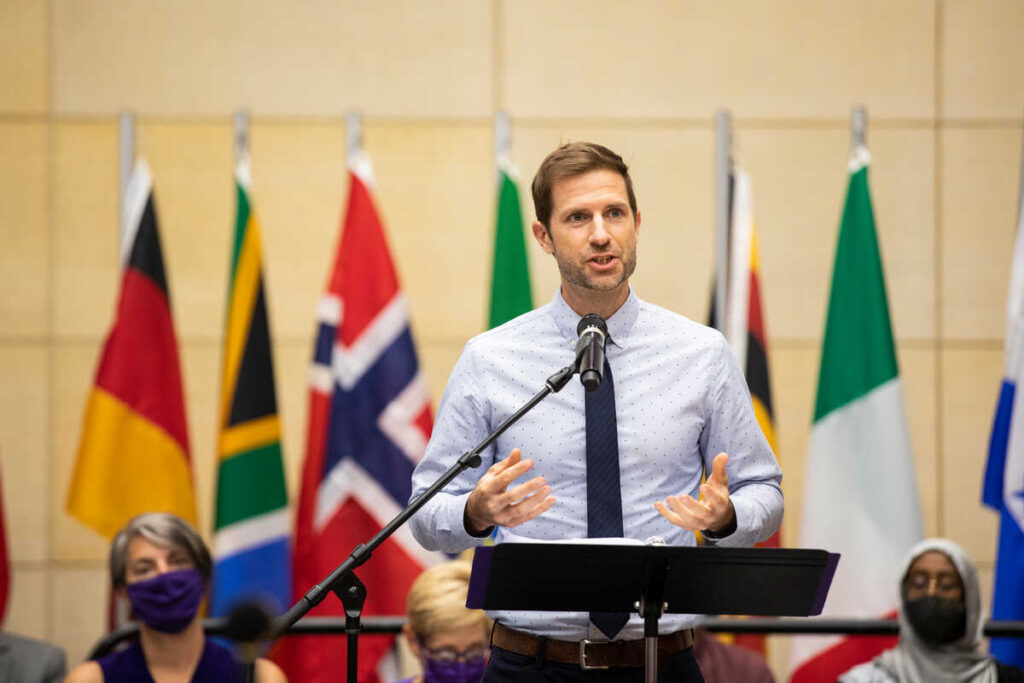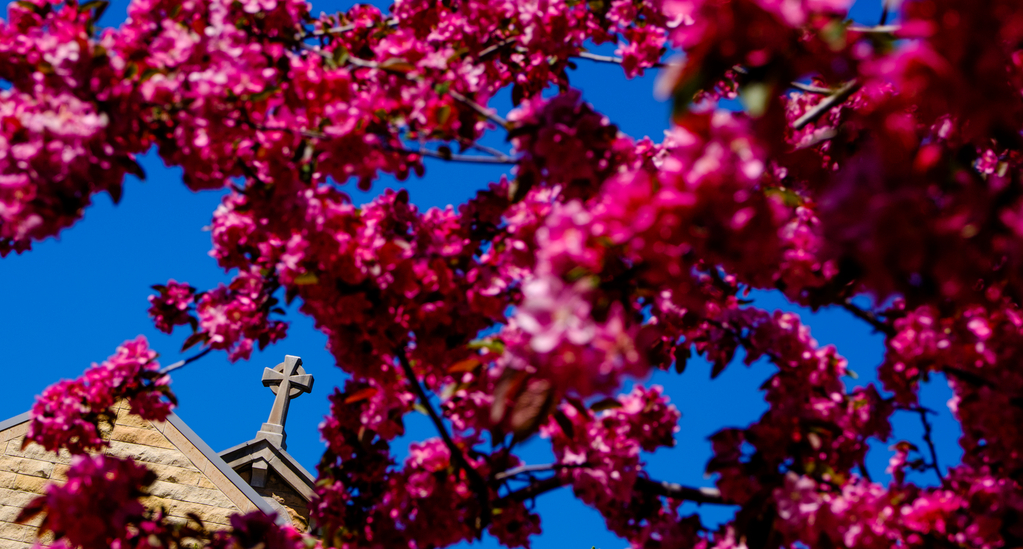Rome has many layers. I learned quickly that to discover this city’s many riches I would have to look both up and down. My eyes would have to scale giant walls and to peek through holes in the ground.- Dan Berthiaume
St. Peter’s Basilica is a case in point. The first thing that struck me about St. Peter’s was its Renaissance grandeur; it manifests, in that bold, confident Renaissance fashion, the splendor and glory of God. But that was not all there was to see. For beneath that enormous church, beneath its six acres of stone, marble and gold, beneath its magnificent dome towering 450 feet above the ground, lies the humble, shallow grave of St. Peter.
I was privileged to visit this grave, and the story is worth recounting. It was a sunny Thursday afternoon and the Catholic Studies group sat just outside the Vatican walls, awaiting permission to enter the smallest country in the world; we couldn’t help but stare at the colorful Swiss Guard. At last, we were granted permission to enter the city, and passed the Swiss Guard with a certain pride. We were led to a point, about 30 yards away from the south side of the Basilica, where once stood the giant obelisk that now stands in the center of the Piazza San Pietro. At that time the obelisk was the centerpiece of the Emperor Nero’s Circus, where St. Peter is thought to have been crucified. It is commonly held that the giant obelisk was the last thing Peter saw before he died. We stood there for a moment, pondering that we were likely standing very near, if not on, the ground where Peter was martyred.
Next we were led beneath the Basilica, where our tour guide began to sketch the great history of the Basilica, from its origins at the sight of St. Peter’s grave, to the original Basillica constructed by Constantine, to the edifice that pilgrims see today. The guide explained how Peter was first buried in an inconspicuous shallow grave on the side of Vatican Hill, where early Christians came in secret to pray. In the fourth century, following the Edict of Milan, the emperor Constantine had a Church built over the grave, which stood until the late Middle Ages, when, after hundreds of years of neglect following the ninth century Barbarian invasions, the Basilica fell into ruin. Old St. Peter’s was torn down, but the shallow grave holding the bones of St. Peter remained. Then, at the beginning of the 16th century, the building of the Basilica that we see today was begun, directly over Old St. Peter’s and the original shallow grave.
With the history of the Basilica having been unraveled, we were led deeper into the excavations under St. Peter’s, where, several meters under the ground, directly under the altar of the Basilica, we saw the original Constantinian structure built around the grave of St. Peter. Within this structure was evidence that Peter’s bones were near: writing on the wall, almost grafittilike, announced that “Peter is within.”
I must admit that, even for all the grandeur of the Basilica above, nothing touched me so much as this tour beneath the church, where I was able to see the bones of a man who had touched our dear Lord.
Throughout my first two weeks in Rome, I had seen this kind of “layered architecture” all over, testifying to the city’s antiquity and longevity. Perhaps the most striking example of this truth is the Church of San Clemente, an historical church par excellence. The present edifice is more than eight centuries old and is built on the remains of a church more than 16 centuries old, which, in turn, is built on a house of worship that dates back to apostolic times. At the Basilica of San Clemente, one can walk into the upper church, marveling at its 12th-century mosaics, descend to the lower, fourth century Basilica to admire some beautiful eighth century frescoes, and descend even further into the original house of St. Clement, the fourth pope, who donated his house to the Church in apostolic times to be used as a place of worship. Here, for almost 2,000 years, Christians have gathered at the Basilica of San Clemente, on three different historical levels, to worship the risen Lord. I thought it a certain privilege to be one of those Christians.
There also are interesting places in Rome where Christianity has interacted with secular, and often times older, Roman monuments and architecture. The many obelisks of the city are good examples. Most of them originate from Egypt, where they were taken by the Romans and set up throughout the city of Rome as signs of Roman strength. When the Roman Empire was converted to Christianity, the Church did not destroy these obelisks, as one might expect; instead, the Church placed crosses on the tops of them, and, in a sense, baptized Roman culture. The obelisks then became signs, not of the strength of secular Rome, but of the triumphant Church of Christ; thus, in many of the piazzas, the cross-clad obelisks stand in testimony to the many triumphs of the Church, especially her triumph over paganism. Another fine example of this interaction between Christian and secular Rome is Trajan’s column. The column was constructed in 113 A.D. to celebrate the victories of the Emperor Trajan, the Roman Pontifex, and it held a statue of him. Now, however, when you look upon the column, you see not a statue of Trajan, but of St. Peter, the true Pontifex Maximus. Everywhere in Rome such examples abound; everywhere such examples testify to the influence of Christ over secular Rome.
I have often heard it said that Rome is the heart of the Church, and I believe it. In my first week in Rome, I was privileged to have attended a Canonization mass. Pilgrims from all over the world, speaking dozens of different languages, crowded within the Piazza di San Pietro to witness the canonization of Daniel Comboni, an Italian missionary who died serving as a bishop to Africa; and of course, the pilgrims came to see their beloved “Papa,” the successor of St. Peter. The liturgy itself utilized several languages including Latin, Italian, French, Spanish, German, English and Syriac, and its music spanned several cultural genres. Despite the great cultural diversity, everyone was able to celebrate together the common liturgy, to confess the common faith, and to sing together in the common language of the Church, Latin. Although I was not able to say hello to the pilgrim at my right because we did not speak the same language, I was able to sing the “Credo” with him.
I had a similar experience one afternoon as I entered a side chapel at St. John Lateran, one of Rome’s four major basilicas, to attend an afternoon Mass. As I walked into the chapel I saw that the Blessed Sacrament was exposed, and many people awaiting Benediction. I could not find the right words in Italian to ask a young lady if she might move down so that I could kneel on the pew, but I could sing with her the “Tantum Ergo.”
I clearly saw here in Rome what I had only glimpsed in the United States – the Catholic Church is indeed the Universal Church, reaching out to all the ends of the earth.
I continue to experience the Universal Church in my studies at the Angelicum, the Pontifical University of St. Thomas Aquinas. The student body is made up of priests, seminarians and lay men and women, and we form a kind of microcosm of the Church. We come from more than 90 countries to study the truth and vitality of Catholicism, united by a common faith and a common zeal to understand that faith to the utmost.
My first two weeks in Rome have been a joy. Everyday, as I walk through this city, I am struck by its rich tradition. On my walk to the Angelicum alone, I pass marvels such as the Piazza del Popolo, the Spanish Steps, and Trevi fountain; the Angelicum itself is just a stone’s throw from the Roman Forum. From the top of the terrace at the St. Thomas Bernardi residence, I can look out into the heart of the city, where the magnificent dome of St. Peter’s stands out boldly above the sky line. Everywhere I look the city is dotted with ancient ruins and Renaissance domes. On one leisurely walk from the Vatican to the Angelicum, I can see the Pantheon, the Santa Maria Sopra Minerva, the Piazza Navona, and the Chiesa Nuova. I can see here in Rome both the glory of the Baroque Gesu and the humility of the Catacombs. I can see, standing next to each other, the ancient Compidoglio and the modern Piazza Venezia. And I am convinced that there is nowhere else in the world where such a wealth of tradition is to be encountered on a simple walk.
